“I’m a dentist by training,” says Monica Nirmala, executive director of Indonesian non-profit Alam Sehat Lestari. The name translates to “Healthy Nature Everlasting,” and the organization, known by its acronym ASRI, is a remarkable trailblazer in community-led conservation focused on protecting the forest habitat of Bornean orangutans.
But a dentist? Nirmala’s background isn’t as incongruous as it might first seem: ASRI, and United States-based partner organization Health in Harmony, have made a skillful intuitive leap and are successfully connecting human health with rainforest conservation, or, as they say, “saving the rainforest with a stethoscope.”
Their work is urgently needed: Last year, the Bornean orangutan joined the Sumatran orangutan in being declared “critically endangered” by the International Union for Conservation of Nature. Orangutan habitat is fast disappearing due to widespread deforestation driven by the expansion of industrial agriculture — particularly oil palm production. Add to that threat the risks from Bornean forest fires, slash-and-burn agriculture, and logging, and its easy to see why P. pygmaeus is on the verge of extinction.
The revised IUCN classification was based on studies showing the loss of 98,730 square kilometers (38,120 square miles) of habitat between 1973 and 2010, with a further loss of 57,140 square kilometers (22,062 square miles) predicted by 2025 — that’s a total land area greater than the state of Georgia.
Even worse, more than half of remaining orangutan habitat has been degraded by logging, while thousands of the animals are hunted each year, primarily for their meat. If nothing is done, the population is on track to decline by more than 80 percent between 1950 and 2025 — a timespan that represents just three generations, according to the IUCN’s assessment.
Hope, Humans, and the Wild
One of the most important remaining populations, with approximately 2,000 individuals, is in Indonesia’s Gunung Palung National Park, just south of the equator in the province of West Kalimantan.
Although the preserve is formally protected under federal law, enforcement is largely absent, so the 900-square-kilometer (347-square-mile) park suffers encroachment by loggers and local agriculture. It is here that ASRI and Health in Harmony are pulling together to ensure a brighter future for Borneo’s great apes.
Health in Harmony co-founder Kinari Webb credits an undergraduate year spent studying Indonesia’s orangutans at a remote rainforest field station as the catalyst for her work: it was during this time in 1993, she says, that she became aware “that human and environmental health are inextricably intertwined.”
Webb decided to study medicine in order to return to Indonesia to “do a combined health care and conservation program. Though I didn’t know at that time exactly what [that program] would look like, what I did know was that the local communities would have a better idea than I ever could what the solutions would be for protecting the forest.”
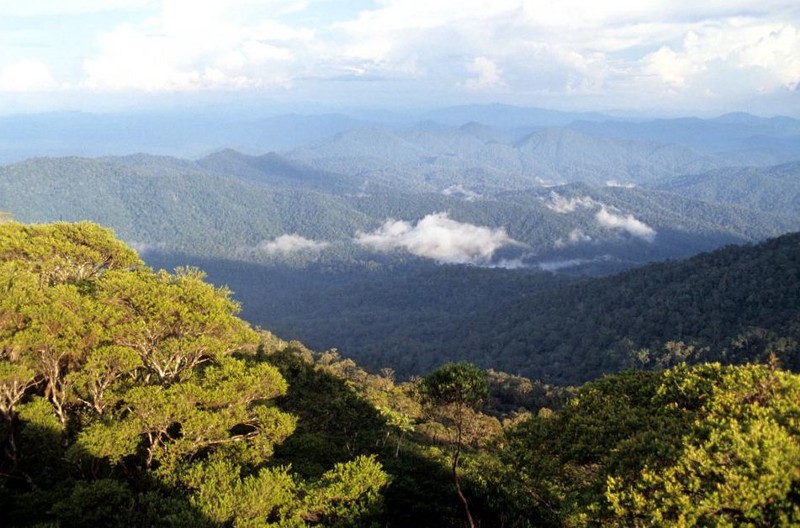
Subsequent experiences working as a medic in Aceh after the 2004 tsunami “solidified for me how critical it was to listen to the communities [I was working in], and to ask them what they saw as the solutions,” Webb says.
When Health in Harmony asked the communities surrounding Gunung Palung what was driving them to log the conserved forest, and what it would take for them to stop, the answers that came back were surprising but compelling: affordable health care and organic farming. Extremely high medical costs were forcing people to turn to logging to pay their health care bills. Exacerbating that problem: current agricultural practices depleted the soil, necessitating the use of expensive fertilizers and leading to slash-and-burn agriculture on the edges of the park.
This “radical listening” approach, first applied by Health in Harmony in their earliest involvement in Borneo, is now a fundamental strategy of the non-governmental organizations’ work. “The amazing thing is that we have found stunning consistency in what communities in a given ecosystem will decide the solutions are. And they do this independently,” Webb reports. “And what we found is that when we actually do what they say: it works! Logging has dramatically declined around Gunung Palung, and [local] people are wealthier and healthier.”

Trees for Treatment
Once they had detected the root of the deforestation problem, Health in Harmony set out to find a cure: in 2007 the non-governmental organziation established a clinic in the town of Sukadana to the west of the national park. ASRI was formed to run the project locally with Monica Nirmala now serving at its head.
Today, the clinic not only provides high-quality health care that is affordable to all, but actively rewards communities that reduce logging, or stop altogether, with further reductions on the cost of treatment. Forest guardians, recruited in every village, encourage others in their community to reduce logging. The guardians also monitor illegal activity and reforestation efforts, and offer training in organic farming techniques.
“The forest guardians are so proud of the work they do, and many have come up with very creative ways to help folks stop practices that are destructive of the forest,” Webb says. “The thing you have to understand is that the forest guardians come from every one of these villages, and they have known the loggers their entire lives.” In fact, many forest guardians are ex-loggers.
This locally driven initiative is paying off, for the forest and for patients visiting the clinic.
“[C]ommunities that are not doing any logging during a given three-month period of time [get] a 70 percent discount on their [medical] bills,” Webb says. “Villages that border the park, and are still logging, get a 30 percent discount — just for agreeing to try to decrease logging. Villages that have dramatically decreased their logging get a 50 percent [health care] discount.”
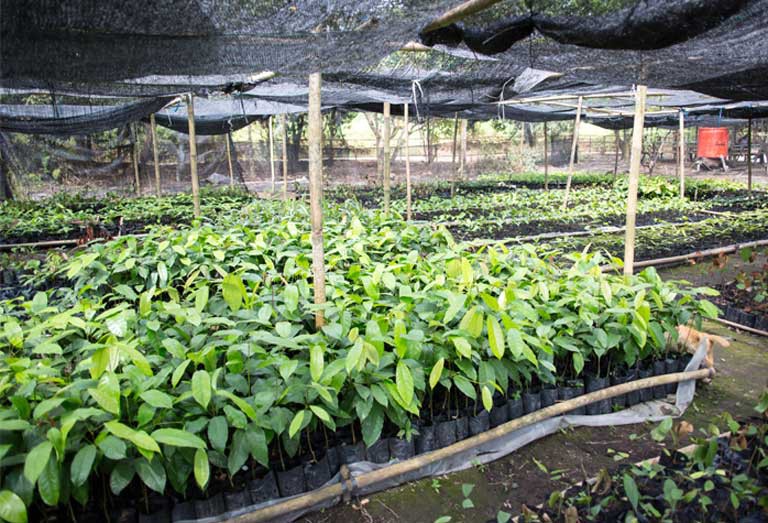
What’s more, patients can barter for treatment — with tree seedlings, seeds, and compost serving as just some of the accepted currencies. These payments are used, in turn, to fund another of ASRI’s projects: reforesting corridors of critical orangutan habitat.
“The most favorite non-cash payment option is seedlings,” Nirmala says. “[P]atients can also [create] a ‘savings account’ at ASRI’s clinic by banking their seedlings for future health-care needs.” It was this option for non-cash payments that first drew Nirmala to ASRI, because it “aligned with my desire to give health-care access to the under served community in rural Indonesia.”
Benefiting Everyone
The positive conservation impacts are clear: the number of households logging in the park has dropped almost 10-fold, from 1,350 when the project started in 2007, to just 180 today. Reforestation of degraded corridors that connect with core areas of orangutan habitat is already producing good results; camera traps confirm that the apes are making use of this newly restored habitat. And they’re not alone: a range of other species have been recorded using the habitat corridor, including the threatened bearded pig, sunbear, and Horsfield’s tarsier, a small nocturnal primate.
“We were able to leverage the social capital gained through health services and the trust gained by saving people’s lives to educate, explore, and sometimes alter, local perceptions and behaviors toward forest conservation,” explains Bethany Kois, research director at Health in Harmony. “[I]n effect, we reduce the need for formal enforcement of the prohibition on logging and poaching within Gunung Palung National Park by providing a personalized, voluntary incentive for compliance with the prohibition.”
This novel approach, Kois points out, has succeeded in a country with among the highest rates of deforestation in the world.
At the same time, measurable health benefits are being received by more than 100,000 of the region’s people: “Infant deaths per 100 households declined from 3.4 to 1.1 over the first five years of the work,” Webb says. Patients who attend ASRI’s clinic are also “more likely to immunize their children, use birth control, and less likely to defecate in the river,” Kois says.

Another initiative is the ASRI Kids program, which aims to raise awareness and increase knowledge of forest and human health basics among the next generation. “The pre- and post-test results are stunning for these classes,” Webb says, with all children learning for the first time that orangutans only occur on Borneo and Sumatra, for example — knowledge likely to increase pride in country and care for the environment.
The program also expands children’s horizons. “The biggest thing I’ve noticed from the kids who started in these classes five years ago is that they now have a much bigger vision for what they might want to do with their lives, [aspiring to become an] architect, marine biologist, doctor, nurse, or field guide,” she says with pride.
Meaningful Work
Webb cites transferring leadership of ASRI to a 99 percent Indonesian team — almost all women — as one of the program’s many successes. And so strong is the appeal of their work that they are able to attract employees from across Indonesian Borneo and beyond, as well as locally.
One employee is Fransciscus Xaverius, known as Pak Frans, ASRI’s reforestation coordinator. Pak Frans worked previously on conservation projects in Central Kalimantan, but was attracted to ASRI’s combined focus on affordable health care and conservation, as well as by the technical challenges presented by reforestation of various types of degraded lands adjacent to the national park.
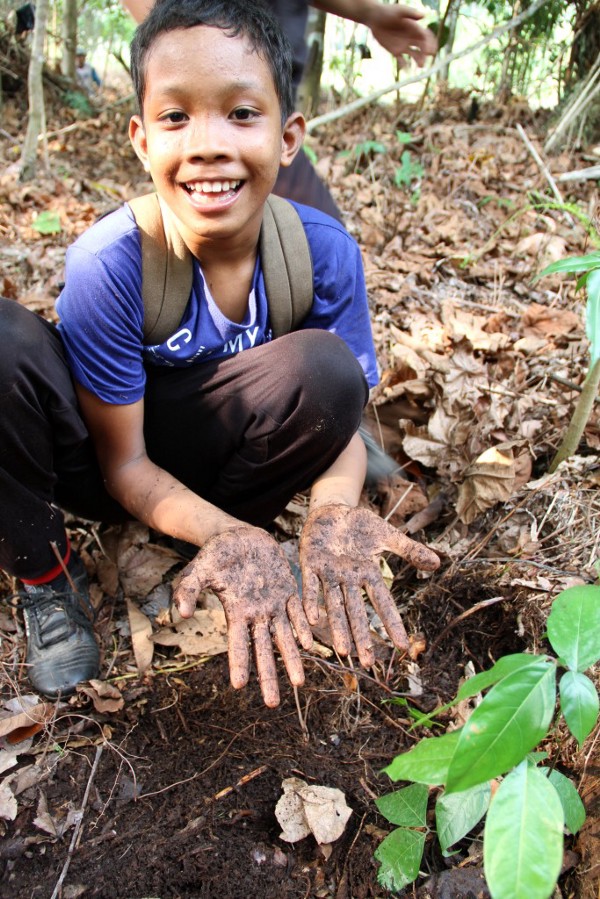
“I enjoy every process in planning, implementing, and evaluation in regards to reforestation activity, as well as cooperation with various stakeholders,” Pak Frans says. “I feel satisfied when seedlings that we plant grow well,” transforming the previously burnt or cleared land back into forest, and delivering benefits to the surrounding community.
Pak Frans has never seen an orangutan in the reforestation plots, but he’s seen something arguably more tantalizing: “I have seen [an] orangutan’s nest in [the] reforestation area, that indicates orangutans have been in the site and made their nest to stay over[night]” rather than just passing through.
Muhammad Yusuf, known as Jili, is an ex-logger from Sukadana who is now the organic farming facilitator at ASRI. “Logging is a high-risk job,” he explains when asked why he switched from logging to conservation. “Besides, as [a] human being, my conscience kept asking whether I did the right thing or not [when logging].” Now teaching organic farming, Jili cites his community involvement — simultaneously reducing logging while making farming more productive — as the reason why he has “never faced rejection from [the] community.… [T]he program is very simple, promising, and sustainable.”
For Sukadana-born forest guardian coordinator Hendriadi, known as Hen, working to enrich life in the community is what’s important. He values community-based projects because of their possibilities for shared knowledge and experience. “Especially when forest guardians and I [went] from household to household, there were new things I learned. I gained stories and understanding about the importance of conservation and life experience from [the] community itself.”
Scaling Up
Webb sees replicating and expanding ASRI’s success as a priority. A newly built hospital and training center, opened late last year, is enabling ASRI to provide more extensive care, including greater surgical and emergency treatment.
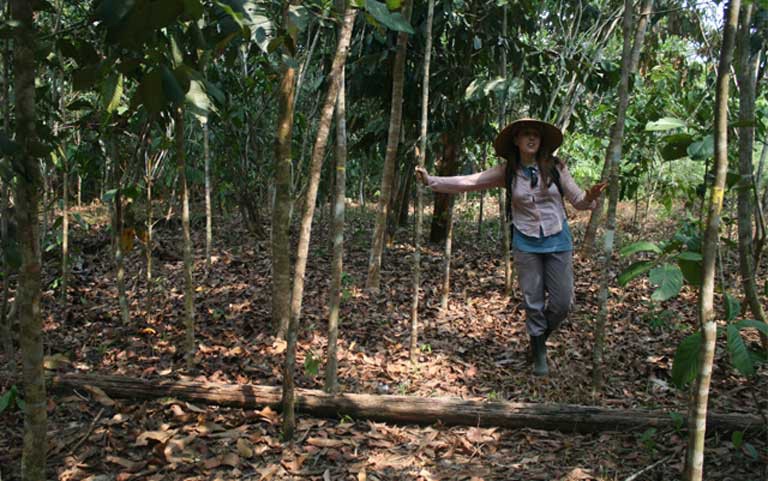
ASRI director Nirmala says that she would like to see the program share its “model, approach, and values to as many people that are interested in doing similar work [as possible]. The vision is to see flourishing win-win situations between communities and their environment, especially in poor and environmentally threatened areas.”
Webb envisions a wheel-and-spoke model as one fruitful avenue of exploration: “For example, we are considering a spoke to Bukit Baka Bukit Raya National Park on the border between West and Central Kalimantan. The population there is not large enough for a clinic (just a few thousand people), but these folks are often logging to pay for health care (both the cost of transportation and fees). Our thought is to be able to provide mobile clinics from ASRI to this location and thereby reduce the stress on the national park and the important orangutan population there.”
“Thus far, we’ve identified a handful of Indonesian protected or conservation forests that contain critical biodiversity, where poor human and environmental health are linked to poverty,” Kois says. “We’re working to understand whether, or to what extent, payments for environmental services — such as health care incentives, protected area enforcement patrols, ecotourism opportunities, and sustainable farms — might act as an effective incentive system in these locations.”
Learning from ASRI’s many accomplishments will be a crucial strategy for shaping future endeavors, Kois says. In 2016, “we recognized that, while we knew our projects were working to effect positive change, we didn’t really understand how they were working. Because we aim to scale-up our model in other locations within Indonesia over the next five years, it is imperative that we learn the ‘how’ of what we do.” To this end, Health in Harmony has embarked upon an evaluation of the mechanisms behind ASRI’s positive impacts.
Promise for Tomorrow
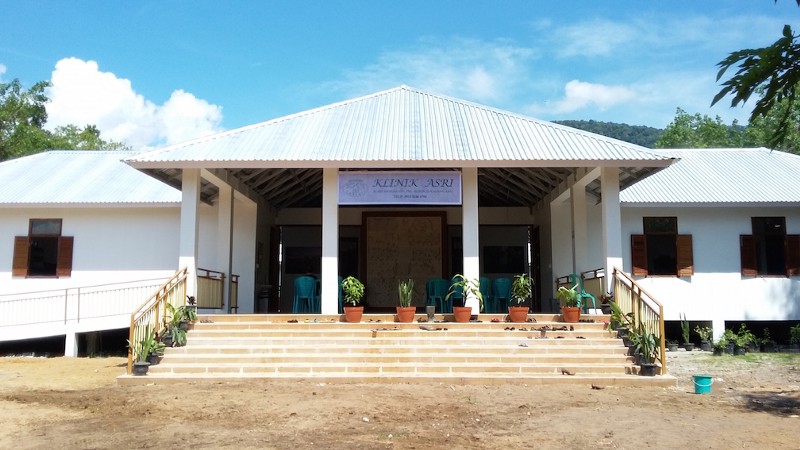
“People really do seem to have hope and that is a wonderful thing,” Webb concludes. “They can see now that life can get better. I was recently talking with a farmer who told me that 80 percent of the farmers in his village had now switched to organic methods.”
“At first I thought that couldn’t possibly be true, but the more he talked, [the more] I realized it probably was. He said they are making much more money too,” and credited ASRI’s trainings for the shift in behavior and for the healthier soil from which the community is now benefiting.
When it comes to orangutans, Webb is equally optimistic in outlook. “There is no question that habitat protection is the absolute key. With so much loss of forests, the national parks (that are also seriously threatened) become even more critical. And the thing is, those win-win solutions are totally possible — we just have to listen to what the communities [say are] the solutions to stopping logging.”
This story originally appeared at the website of global conservation news service Mongabay.com. Get updates on their stories delivered to your inbox, or follow @Mongabay on Facebook, Instagram, or Twitter.





